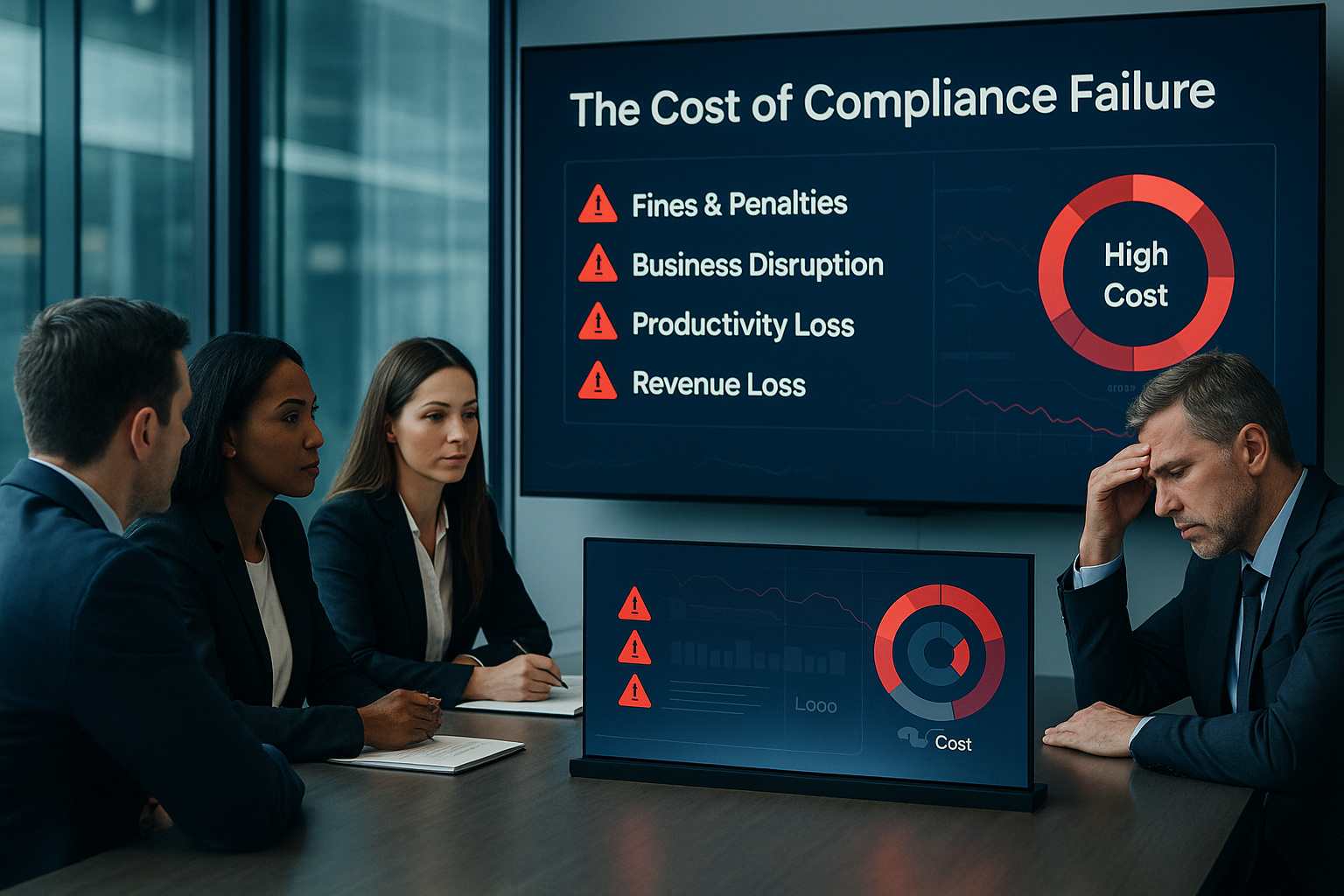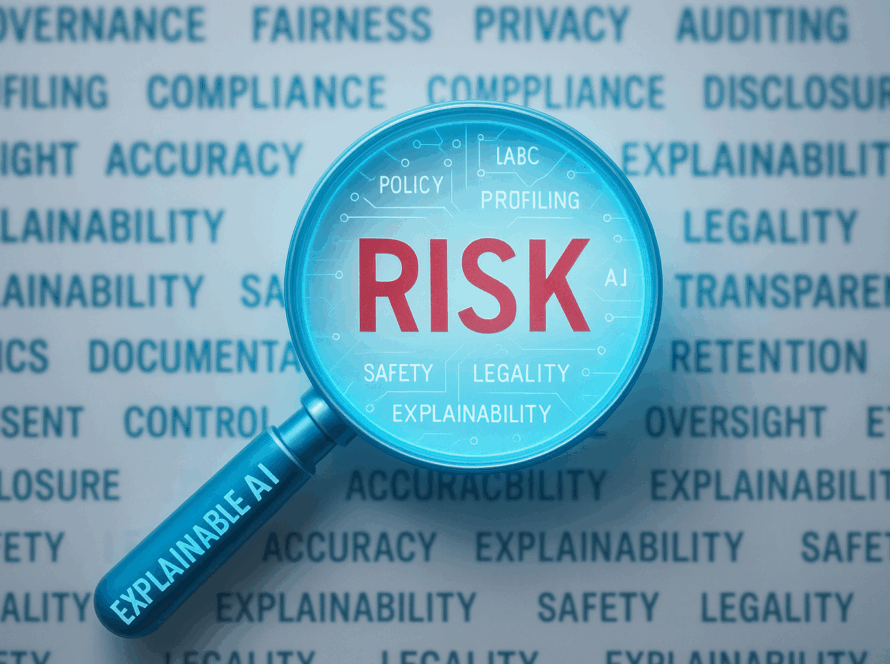The Question Every Compliance Leader Is Asking
Artificial intelligence has become the business buzzword of the decade. From generative platforms that draft text in seconds to predictive tools that forecast consumer behavior, AI is rapidly reshaping industries. Yet in compliance, the conversation feels different. The stakes are higher, the tolerance for error is lower, and the risks associated with black-box systems are greater.
When leaders hear “AI,” their instinct is often caution. They ask: Can this system be trusted? Will it withstand an audit? Can it explain its reasoning when challenged? These are not abstract questions — they are the defining questions for compliance technology.
It’s in this environment that Lexa Shield enters the discussion. But that leads to a natural question: Is Lexa Shield an AI?
Why the Definition of AI Matters
Artificial intelligence is not one thing — it is a spectrum. On one end are generative systems designed to create, predict, and simulate. On the other hand, systems are designed to evaluate, classify, and enforce rules with consistency. Both are AI, but they operate differently — and their suitability depends on the problem they are meant to solve.
Generative AI has shown promise in creativity and scale. But for compliance, its statistical inference creates a problem: it cannot always explain its answers. This is why McKinsey’s State of AI 2024 found that 40% of executives cite explainability as a top barrier to adoption.1 IBM’s Global AI Adoption Index showed that 43% of IT leaders rank trust and transparency as their biggest concern.2
The distinction matters. Compliance is not about creativity. It is about defensibility. That requires a form of AI that not only generates answers but also shows its work. It’s like when your math teacher wanted you to show your work, how you got to the answer, rather than skipping to the answer completely and getting it wrong.
The real question isn’t whether AI can mimic human intelligence — it’s whether it can be explained, defended, and trusted in a boardroom or a courtroom.
The real question isn’t whether AI can mimic human intelligence — it’s whether it can be explained, defended, and trusted in a boardroom or a courtroom.
The Risks of Black-Box AI
The risks of relying on systems that cannot explain themselves are already visible.
- Mata v. Avianca (S.D.N.Y. 2023): Attorneys were sanctioned after submitting a filing with AI-generated, nonexistent citations. The judge made it clear: “reliance on opaque outputs” is not an excuse in court.3
- U.S. Federal Standing Orders (2023–2024): Multiple judges, including Judge Brantley Starr (N.D. Tex.), now require lawyers to certify whether AI was used in filings. The judiciary itself is signaling that reliance on black boxes is unacceptable.4
- Anthropic / Claude citation error (2025): Even advanced models produced inaccurate legal citations, reinforcing that hallucinations are not confined to “bad” tools but endemic to black-box generative AI.5
But the issue extends beyond the courtroom. In HR, a job description might contain subtle discriminatory phrasing that slips past static keyword lists — language that could expose the company to claims of bias. In marketing, a campaign could unintentionally include terms inappropriate for minors or language that regulators flag as misleading, even if it looked harmless in a draft. These risks often hide in nuance, context, and evolving standards — precisely where black-box systems fail, because they cannot explain what they miss or why.
None of these are arguments against AI as a whole. They are arguments against black-box AI. In compliance, a decision that cannot be explained cannot be defended.
Where Lexa Shield Fits
So, where does Lexa Shield stand in this spectrum?
Lexa Shield is an AI system — specifically, Explainable AI. Its purpose is not to mimic human creativity, but to provide human professionals with transparent, traceable, and repeatable results they can defend.
Every output is consistent and audit-ready. Every finding ties back to a specific obligation or standard. Every report creates a trail that can be shown to a regulator, board, or court. That is not an accident — it is explainability by design.
| Feature | Black-Box AI | Lexa Shield (Explainable AI) |
| Outputs | Can be inconsistent, sometimes hallucinate | Designed to deliver consistent, repeatable results |
| Transparency | Hidden logic, little rationale provided | Built for explainability with standards-based rationale |
| Compliance Risk | Hard to defend in audits | Supports audit-readiness with traceable outputs |
| Governance Fit | Governance often added after deployment | Governance considerations integrated from the start |
| Trust Level | Requires extensive human review | Designed to strengthen organizational trust in AI use |
Supplementing, Not Replacing
Just as importantly, Lexa Shield is not intended to replace the tools organizations already rely on — such as dashboards, frameworks, repositories, or checklists. Each of those has value. They provide visibility, order, and structure.
Lexa Shield was built to supplement what they lack in reasoning.
Dashboards highlight shifts in risk. Lexa Shield explains why those shifts matter.
Checklists ensure tasks are completed. Lexa Shield reconnects them to their obligations.
Searches retrieve documents. Lexa Shield interprets their significance.
Repositories store records. Lexa Shield makes them defensible.
The result is not replacement. It is completion.
Why Explainability Is the New Baseline
This is not just a market trend — it is becoming a regulatory expectation.
ISO 37301 requires compliance programs to demonstrate accountability and continuous improvement.6
NIST’s AI Risk Management Framework highlights transparency and traceability as essential controls.7
Gartner warns that nearly half of risk leaders now view generative AI as an emerging enterprise risk, primarily because of explainability gaps.8
For HR and marketing leaders, the implications are practical. Regulators won’t accept “the system said so” as an excuse for a hiring outcome or a misdirected campaign. Boards won’t tolerate vague answers about why risks were flagged but never explained. Employees will not trust systems that seem arbitrary.
Compliance technology that cannot explain itself risks irrelevance in this environment. The baseline for the future is not just automation — it is automation with explanation.
Empowering Human Judgment
Some see AI in compliance as a threat to human expertise. Lexa Shield was built from the opposite assumption: compliance decisions will always rely on people. Technology’s role is to empower those people.
Lexa Shield does not make judgment calls. It equips professionals with the evidence to support their claims. It works in real time, adapts as rules evolve, and produces reasoning that can be traced and defended.
Looking Ahead
So, is Lexa Shield an AI? Yes — but not the kind of AI that generates unchecked outputs or leaves professionals guessing. It is Explainable AI, purpose-built for compliance: structured, transparent, and auditable.
Compliance leaders do not face a choice between using AI or avoiding it. They face a choice between systems that cannot explain themselves and systems that can. In that choice, the winners will be those who select AI that strengthens trust.
Lexa Shield was built for that future. It does not compete with dashboards or frameworks. It completes them, adding the missing layer of explainability that turns activity into accountability. In compliance, that is the difference between looking ready and being ready.
In many ways, Lexa Shield represents the next step in next-generation compliance intelligence. It offers a protective layer for organizations operating in the golden age of LLMs — one designed to complement their creative strengths with the transparency and traceability compliance demands.9
Compliance without clarity is chaos.
References
- Singla, A., Sukharevsky, A., Yee, L., Chui, M., & Hall, B. (2025, March 12). The state of AI: How organizations are rewiring to capture value. McKinsey & Company. https://www.mckinsey.com/capabilities/quantumblack/our-insights/the-state-of-ai
- IBM Corporation. (2022, May). IBM Global AI adoption index 2022. IBM. https://www.snowdropsolution.com/pdf/IBM%20Global%20AI%20Adoption%20Index%202022.pdf
- Mata v. Avianca, Inc., No. 1:22-cv-01461 (S.D.N.Y. June 22, 2023). https://law.justia.com/cases/federal/district-courts/new-york/nysdce/1:2022cv01461/575368/54/
- United States District Court for the Northern District of Texas. (n.d.). Judge Brantley Starr. U.S. District Court, Northern District of Texas. https://www.txnd.uscourts.gov/judge/judge-brantley-starr
- Anthropic. (2025, August 27). Detecting and countering misuse of AI: August 2025. Anthropic. https://www.anthropic.com/news/detecting-countering-misuse-aug-2025
- Doshi-Velez, F., & Kim, B. (2017). Towards a rigorous science of interpretable machine learning (arXiv:1702.08608). arXiv. https://doi.org/10.48550/arXiv.1702.08608
- Future of Life Institute. (2025). The EU Artificial Intelligence Act. ArtificialIntelligenceAct.eu. https://artificialintelligenceact.eu/
- Gartner, Inc. (2023, August 8). Gartner survey shows generative AI has become an emerging risk for enterprises [Press release]. Gartner. https://www.gartner.com/en/newsroom/press-releases/2023-08-08-gartner-survey-shows-generative-ai-has-become-an-emerging-risk-for-enterprises
- Upmann, P. (2025, February 18). AI governance platforms 2025: Enabling responsible and transparent AI management. AIGN Global. https://aign.global/ai-governance-consulting/patrick-upmann/ai-governance-platforms-2025-enabling-responsible-and-transparent-ai-management/

